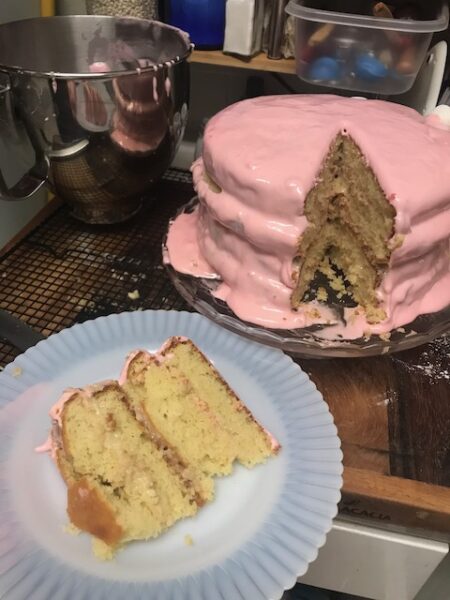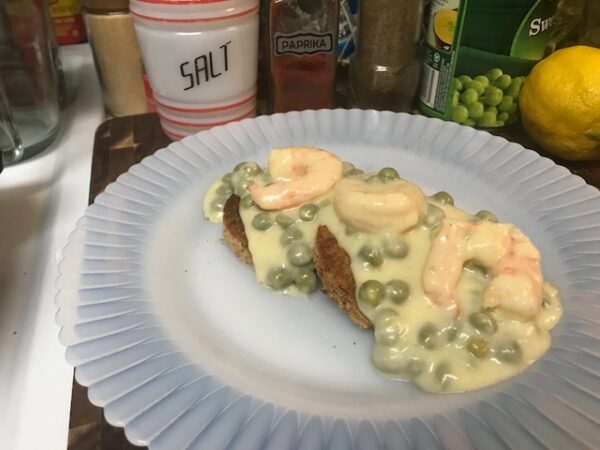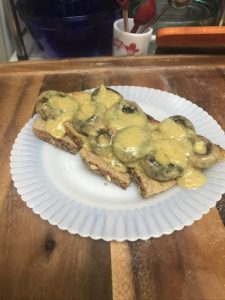From the Sunday 24 June 1923 edition of the Brooklyn Daily Eagle, via the blog Steve Rogers’ New York

Not Ginger Ale but Gingerade.
Question (from Mrs. J. S. W.): “Kindly give me a recipe for ginger ale.”
Answer: I regret that I have no recipe for ginger ale. But here is a simple old-fashioned recipe for a gingerade: Combine one gallon of boiling water, once [sic.] ounce of the best bruised ginger, the same amount of cream of tartar and one pound of loaf sugar; stir till the sugar is dissolved, leave until it is warm as new milk, then add one dessertspoonful of yeast on a small piece of bread; cover the pan with a cloth and leave for a whole day, then strain and bottle. Be careful not to fill the bottles too full, or they will burst. Cork tightly and tie down. This will be fit to drink after two days, but will keep longer.
My first attempt at making this dramatically exploded. I appear to have weaponized ginger beer. Turns out, active dry yeast hadn’t been invented in the 1920s, and whatever yeast they meant me to include 2 teaspoons (1 dessert spoon) of was obviously not as concentrated or as prolific. On the plus side, I had a compelling reason to immediately deep clean my entire kitchen, and it looked lovely afterward. On the downside, I got multiple cuts and everything smelled like ginger beer for days. Also, I had to deep clean my entire kitchen.
Just what is going on with this recipe? Breaking it down to the individual weird bits:
- Boiling water: Sanitization. We’re intentionally cultivating fermentation with a specific fungus and want to minimize contamination by other microorganisms
- Loaf sugar: As an artifact of the process for refining sugar cane, sugar used to come in cones, to be cut into lumps or broken apart at home. Even after granulated sugar became more widely available, some people still preferred sugar loaves because that way they knew it was definitely caned sugar, and less likely to be adulterated (with perhaps sweet-tasting lead acetate). Keep in mind this is only 17 years after selling adulterated or misbranded food was outlawed in a way that could be enforced across state lines.
- Warm as new milk: Cows body temp is about 101 degrees F. Since this is also near ideal yeast proofing temp, I assume they mean roughly that. It’s surprisingly hard to look up what temperature milk comes out of the cow.
- One dessertspoonful: 2 teaspoons. The Joy of Cooking (1931) has a table of conversions from old 1800s measurements into new, more standardized “level measurements”, as do several others.
- A small piece of bread: According to a friend who brews mead, yeast fed on only sugars gets a funky, unpleasant flavor to them. The bread is probably included as yeast food.
- Fit to drink in two days: Consuming a lot of living yeast isn’t very good for you. Presumably by two days, the pressure in the sealed bottle will have built up high enough to kill off the yeast, leaving their fizzy, carbonated, byproducts (and a sediment of dead yeast at the bottom).
For the second attempt, I looked up how much active dry yeast modern brewed root beer recipes use, and used roughly that. I used half loaf sugar from the local Mexican market and half white cane sugar. The recipe probably intends white loaf sugar, but that’s harder to get. I rinsed all my tools with boiling water to be on the safe side. I also used carefully cleaned Trader Joe’s blood orange soda bottles instead of a thrift store flip-top bottle of unknown provenance, so I knew it could handle the pressure from carbonation.
My partner asked me why on earth there was a slice of bread floating in a bowl on the counter. I’m not sure my explanation reassured him.
Miraculously, it actually worked. I have made soda. I feel witchy and powerful.
It’s softly fizzy, like champagne, rather than the more aggressive bubbles of a Coke. The ginger flavor is mild, and a bit like ginger ale rather than ginger beer. The flavor is more subtle and complex than it has any right to be given the simplicity of the ingredients. I think it could use a bit more acidity since it’s very sweet, but this is actually tasty. It’s even better chilled or served over crushed ice.










